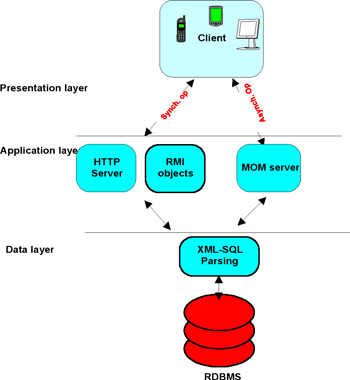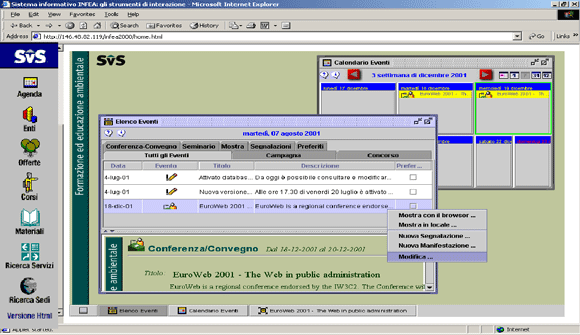|
|||||
A Public Access Web Information System for the Italian Ministry of the Environmentby Nicola Aloia and Cesare Concordia A Web Information Service has been implemented for the Italian Ministry of the Environment providing effective access for a large and diverse user community. The Web-based Information Systems (WIS) group of ISTI-CNR has just completed the implementation of a public access Web information system for the 'Sustainable Development Service', a division of the Italian Ministry of Environment. The goal is to promote and coordinate nation-wide programmes and initiatives for the public on environmental awareness, education and training. The system provides tools for administration, research, and information dissemination. The 'human component' of the information system is distributed over the Italian territory and connected via Internet. The system users play different roles based on their skill and responsibility. Users with the role of 'Editorial Staff' control and coordinate the information publication activity. The authentication mechanism employs digital certification. The system architecture has been designed with the following goals:
The computer system has been implemented using a three tier architecture (see Figure 1).
The presentation logic is built through a 'multi-client' user interface, where the client can be based on a Web browser (ie HTML), a Java applet, a PDA microbrowser or a Wap mobile phone. The server is in a position to recognize the device from which the access request arrives and to activate the appropriate user interface. The Java applet GUI implements the desktop metaphor, providing the typical functionality of a windows based system, enabling users to create windows, to magnify them, to move them, iconize them, etc. (see Figure 2). The desktop can contain active objects, such as, for example, the Messenger (active object for events notification), and can easily be extended with new services and functionalities (eg cooperative work features like directories shared via Web, etc).
The whole application layer is implemented using Java technologies to guarantee the platform independence requirement. The SVS server manages two kind of interactions: synchronous and asynchronous. The first ones are implemented by means of Java servlets, provided by an integrated HTTP server, and a set of RMI objects, while the latter are based on a Message Oriented Middleware (MOM). Clients can connect to the right server depending on the kind of operations to be performed. As the information managed by the system is collected mostly in data-centric documents characterised by a regular structure and fine-grained data, we chose a relational database magagement system (RDBMS) to implement the data layer. The native features of the RDBMS allow high-volume, transactional, and secure database operations. The technology used includes languages and tools mostly deriving from the open-source communities: the HTTP server and servlet container is Jakarta Apache Tomcat, the Message Oriented Middleware (MOM) is JORAM, Java Open Reliable Asynchronous Messaging, developed and maintained by INRIA. Since the data layer is implemented using Java Database Connectivity (JDBC) API, several RDBMS were tested; the production release runs on Microsoft SQL Server. XML has been used to obtain a specific data exchange language among system components. Extensible Stylesheet Language Transformations (XSLT) has been used to obtain the different renderings needed by the presentation layer and Extensible Stylesheet Language Formatting Objects (XSL-FO) for generating reports in various formats. A few years ago, the opportunity for the public administration to adopt e-government strategies, was largely theoretical; today, thanks to Internet facilities there is a great opportunity to significantly enhance the organization of work in public institutions. Web based Information Systems are, in our opinion, a strategic choice. Please contact: |
|||||




